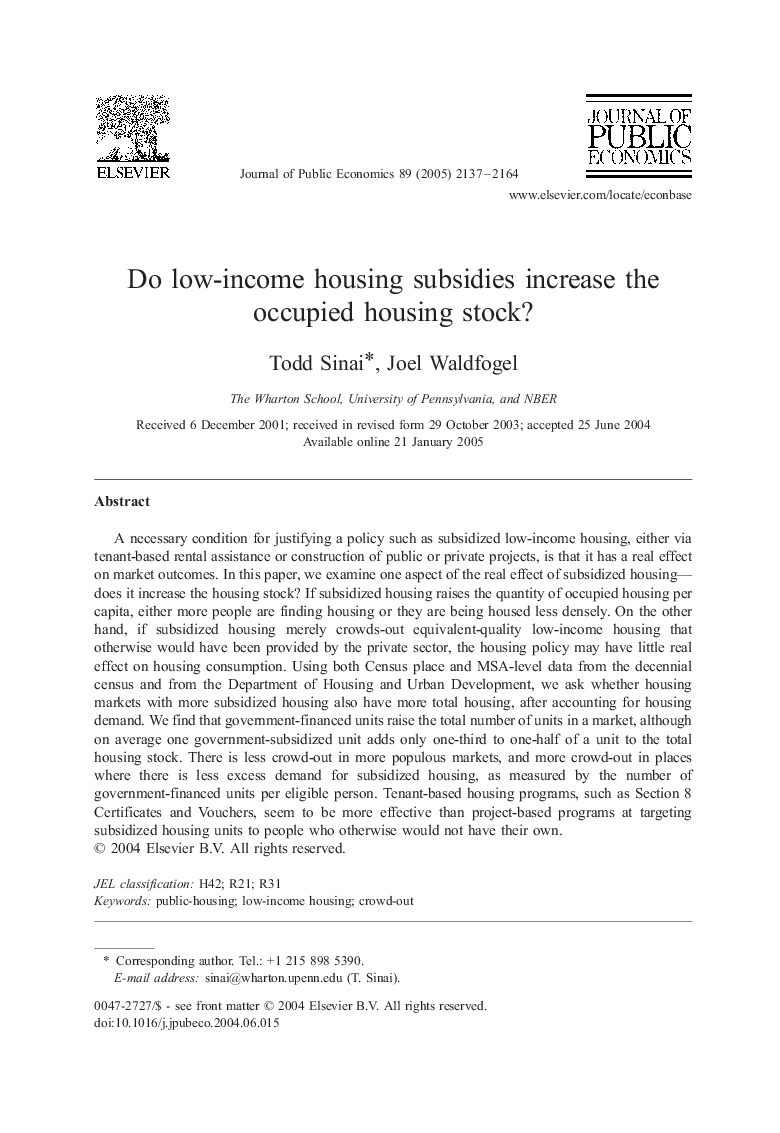| Article ID | Journal | Published Year | Pages | File Type |
|---|---|---|---|---|
| 969155 | Journal of Public Economics | 2005 | 28 Pages |
A necessary condition for justifying a policy such as subsidized low-income housing, either via tenant-based rental assistance or construction of public or private projects, is that it has a real effect on market outcomes. In this paper, we examine one aspect of the real effect of subsidized housing—does it increase the housing stock? If subsidized housing raises the quantity of occupied housing per capita, either more people are finding housing or they are being housed less densely. On the other hand, if subsidized housing merely crowds-out equivalent-quality low-income housing that otherwise would have been provided by the private sector, the housing policy may have little real effect on housing consumption. Using both Census place and MSA-level data from the decennial census and from the Department of Housing and Urban Development, we ask whether housing markets with more subsidized housing also have more total housing, after accounting for housing demand. We find that government-financed units raise the total number of units in a market, although on average one government-subsidized unit adds only one-third to one-half of a unit to the total housing stock. There is less crowd-out in more populous markets, and more crowd-out in places where there is less excess demand for subsidized housing, as measured by the number of government-financed units per eligible person. Tenant-based housing programs, such as Section 8 Certificates and Vouchers, seem to be more effective than project-based programs at targeting subsidized housing units to people who otherwise would not have their own.
